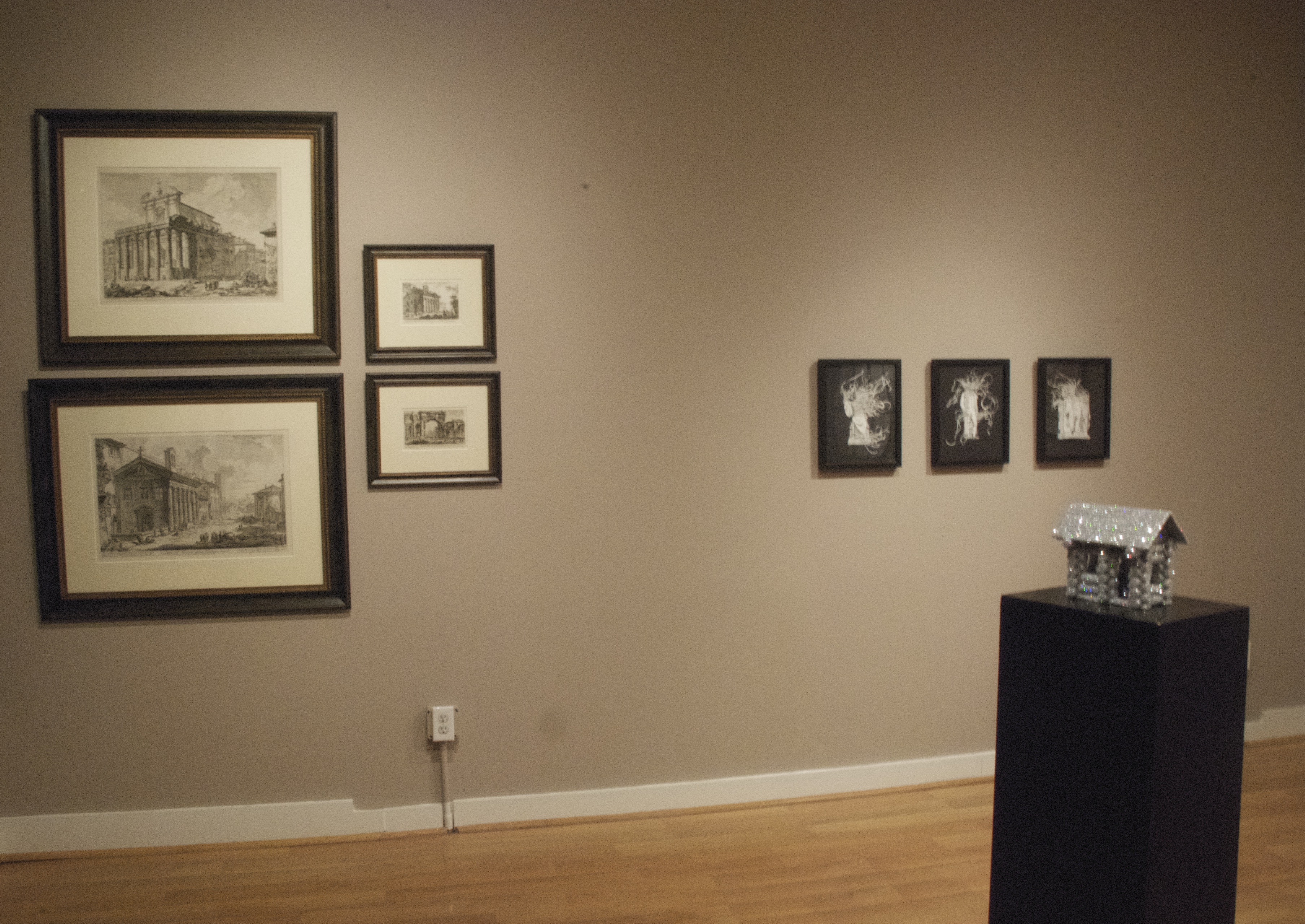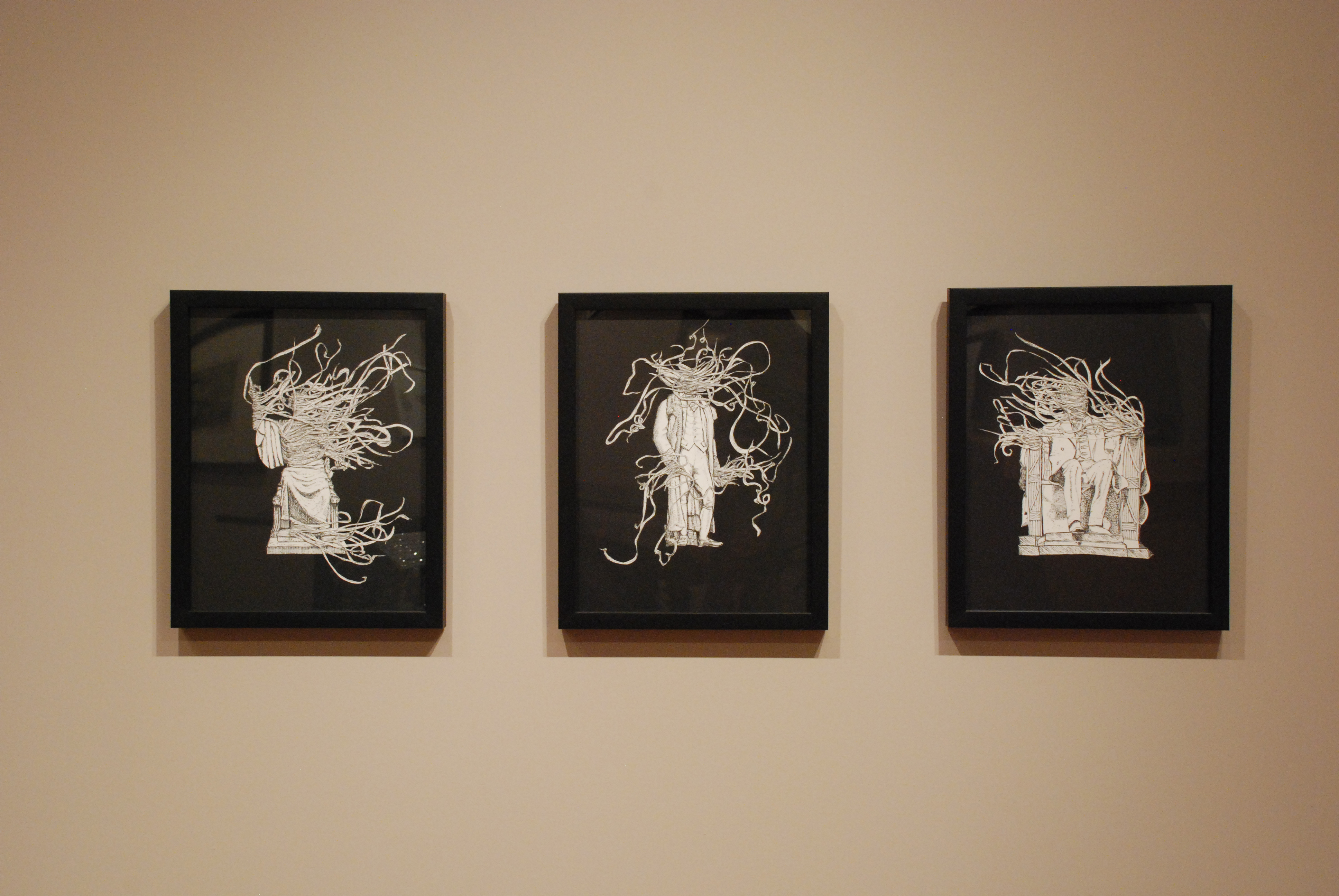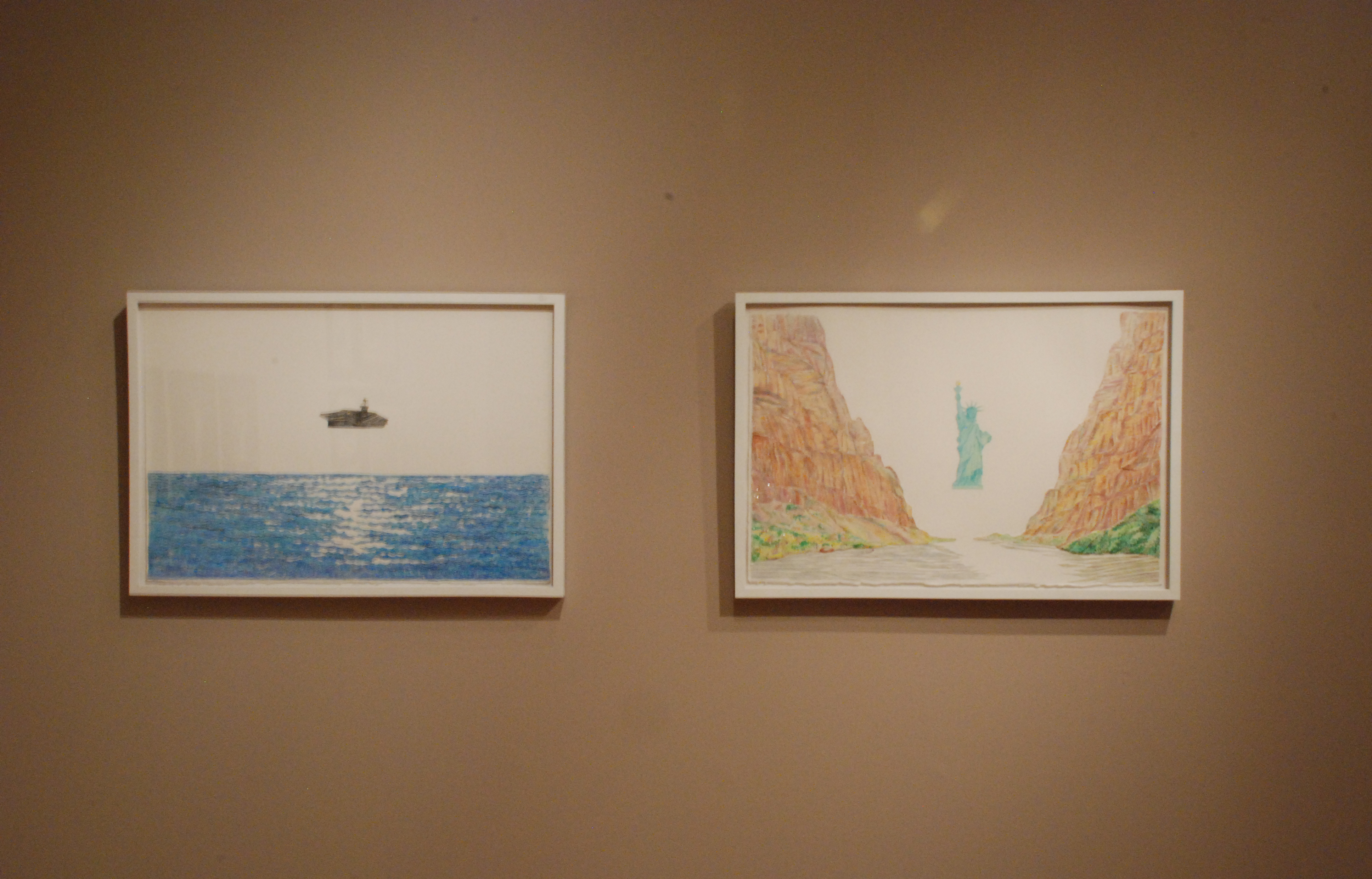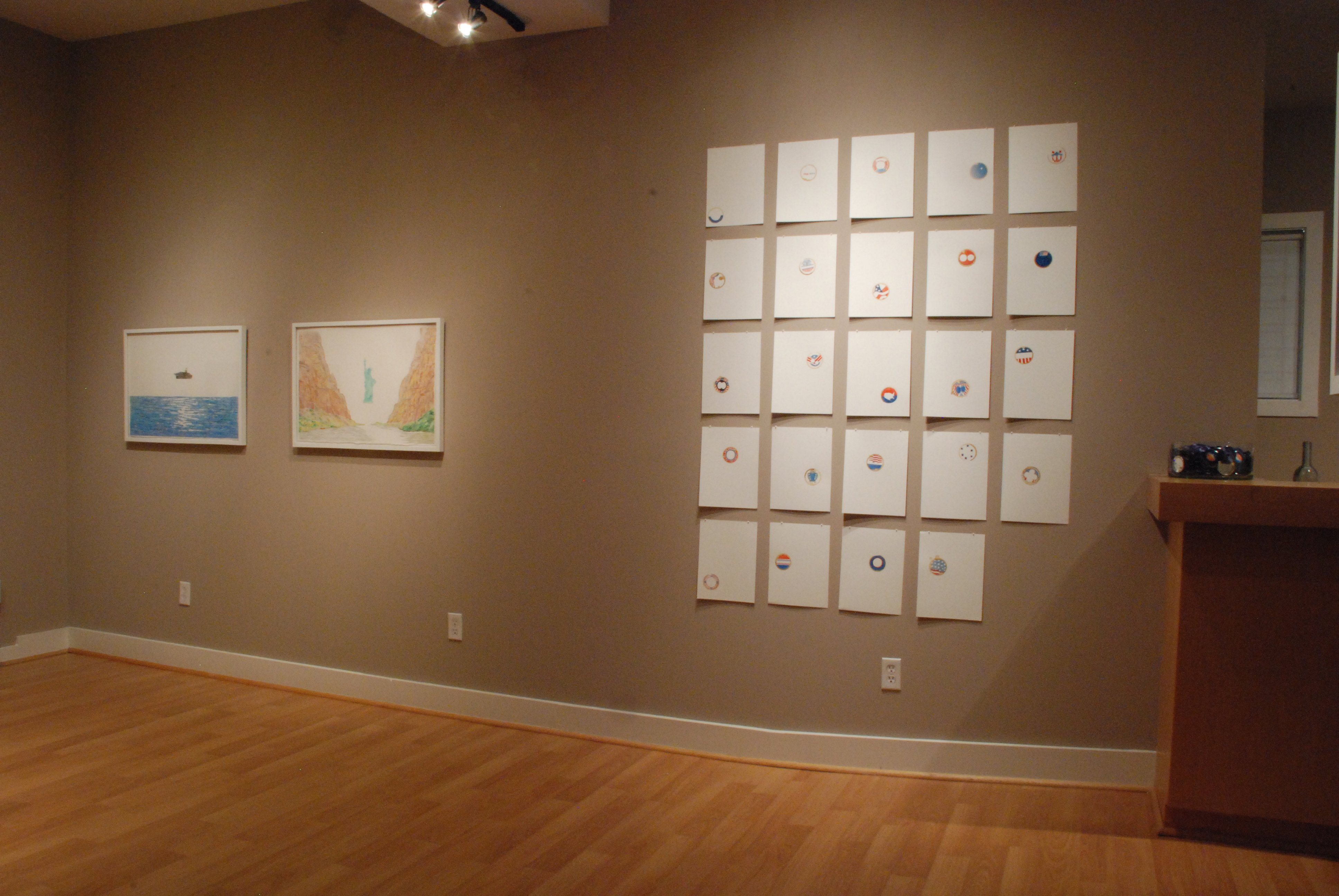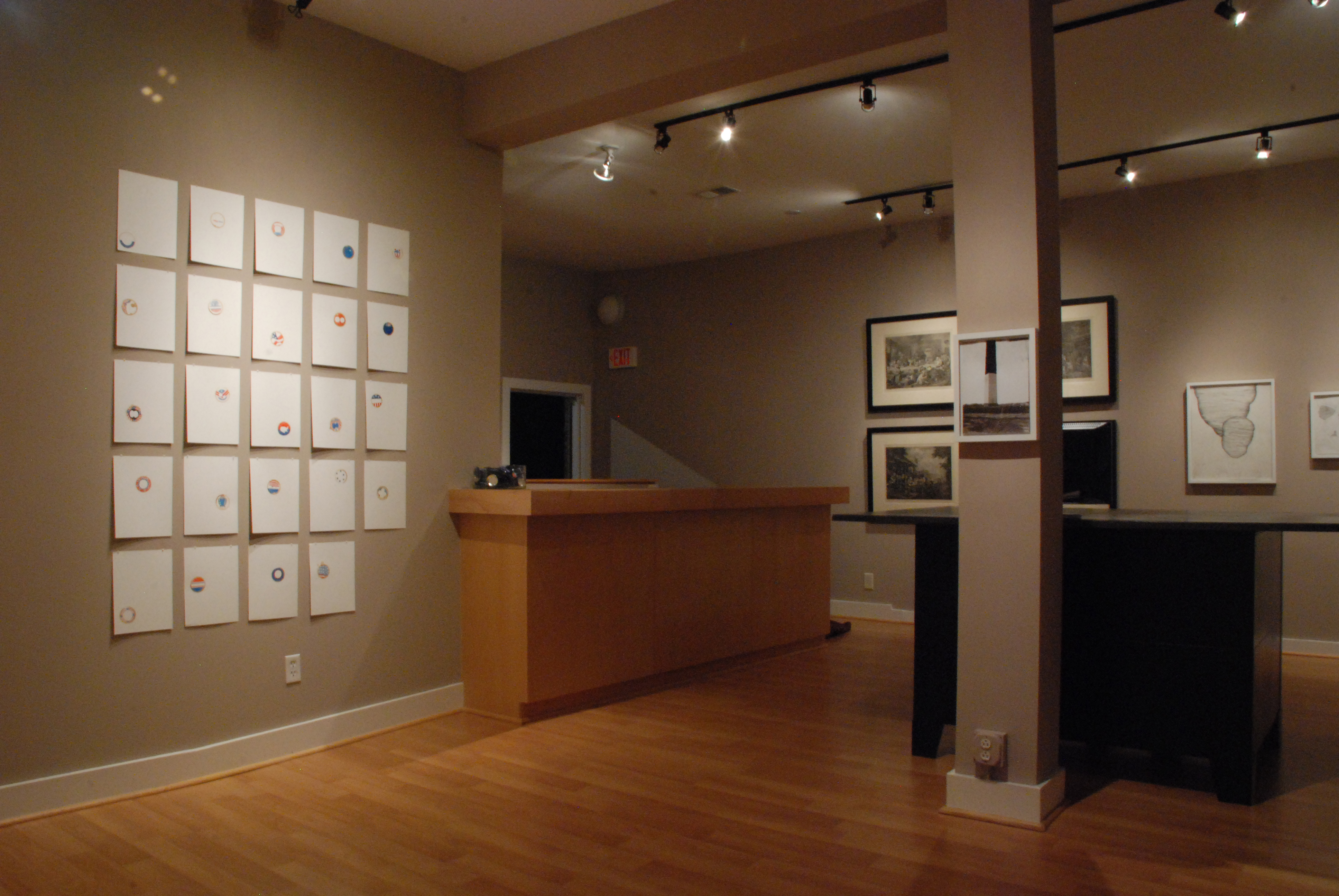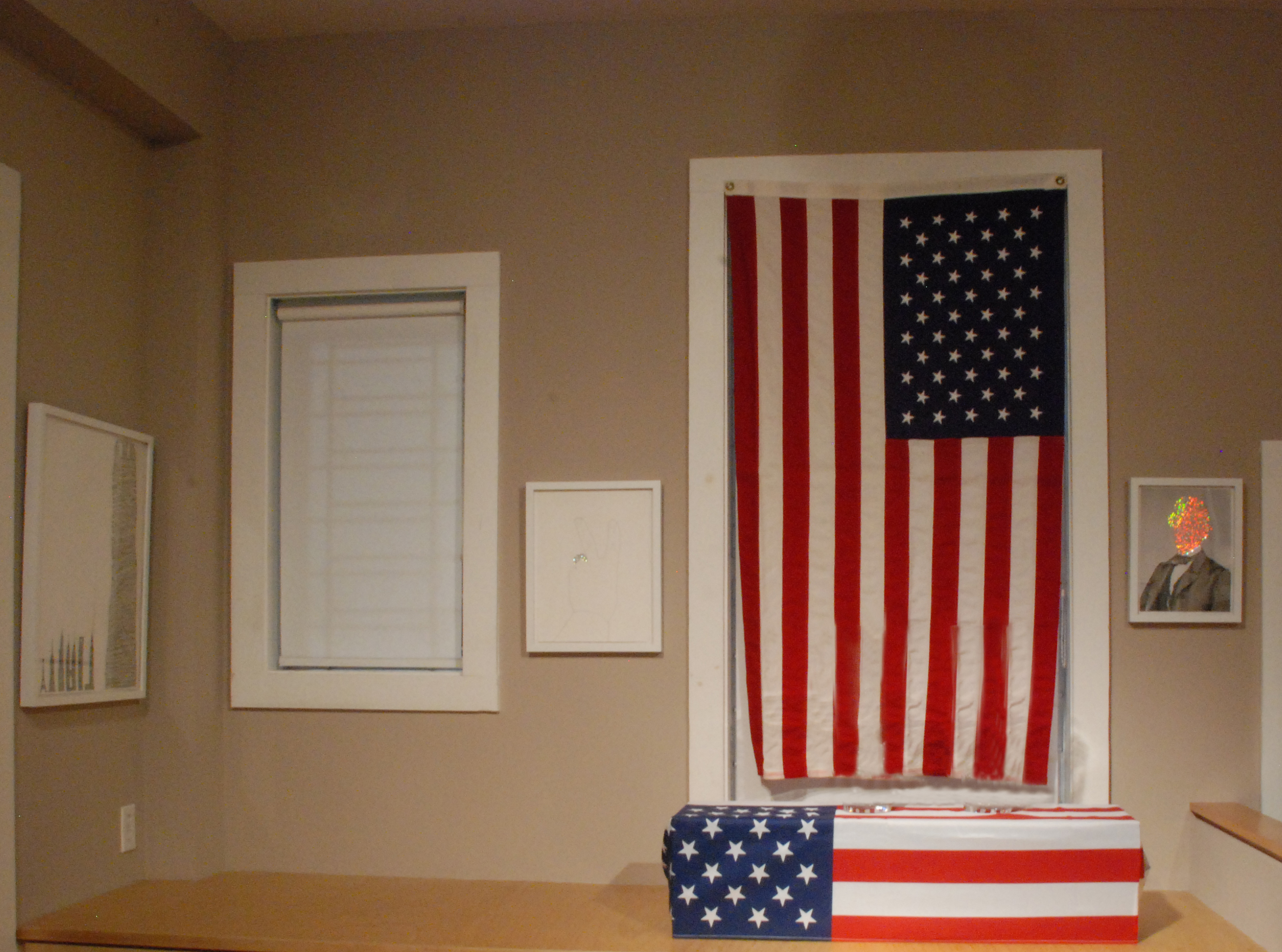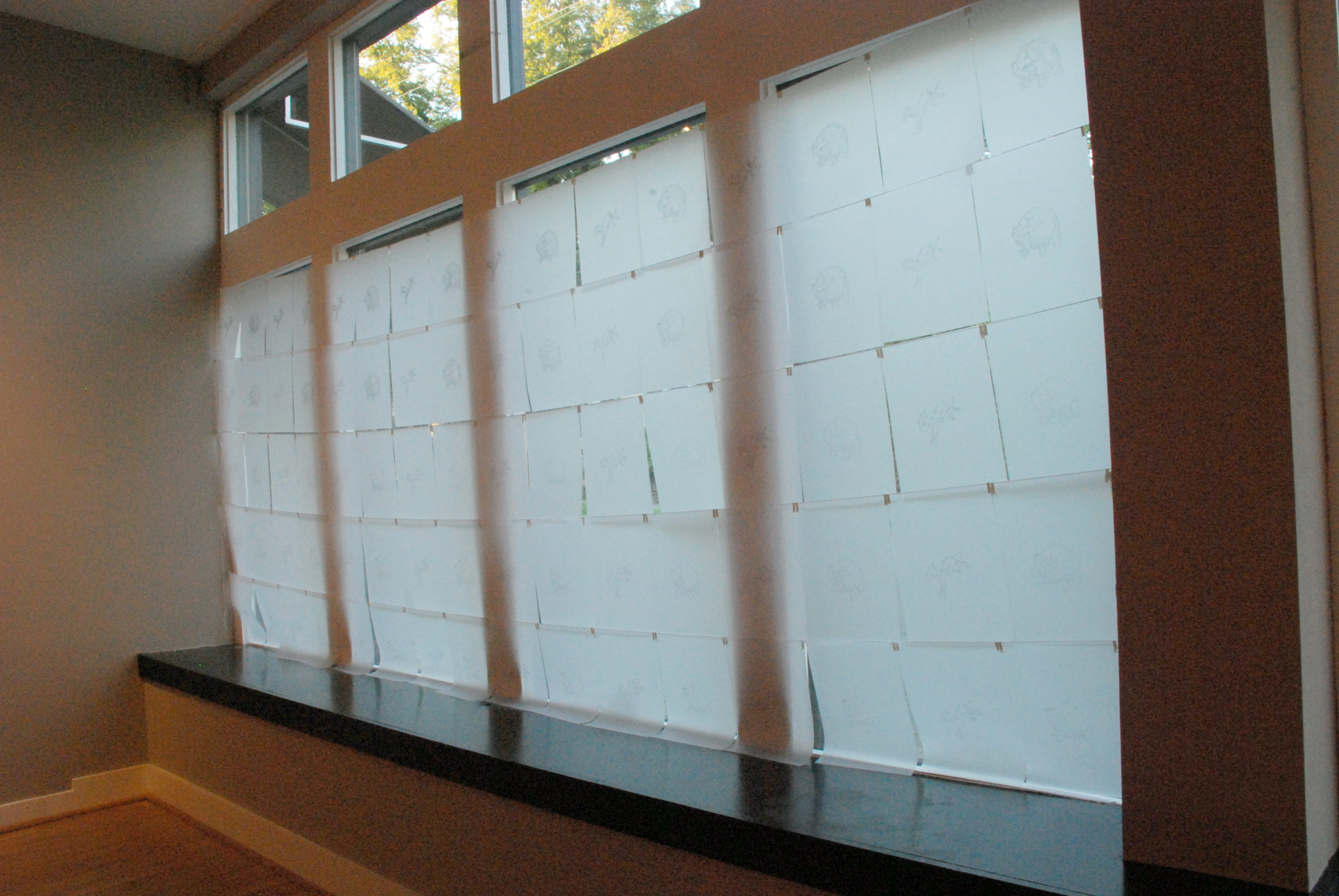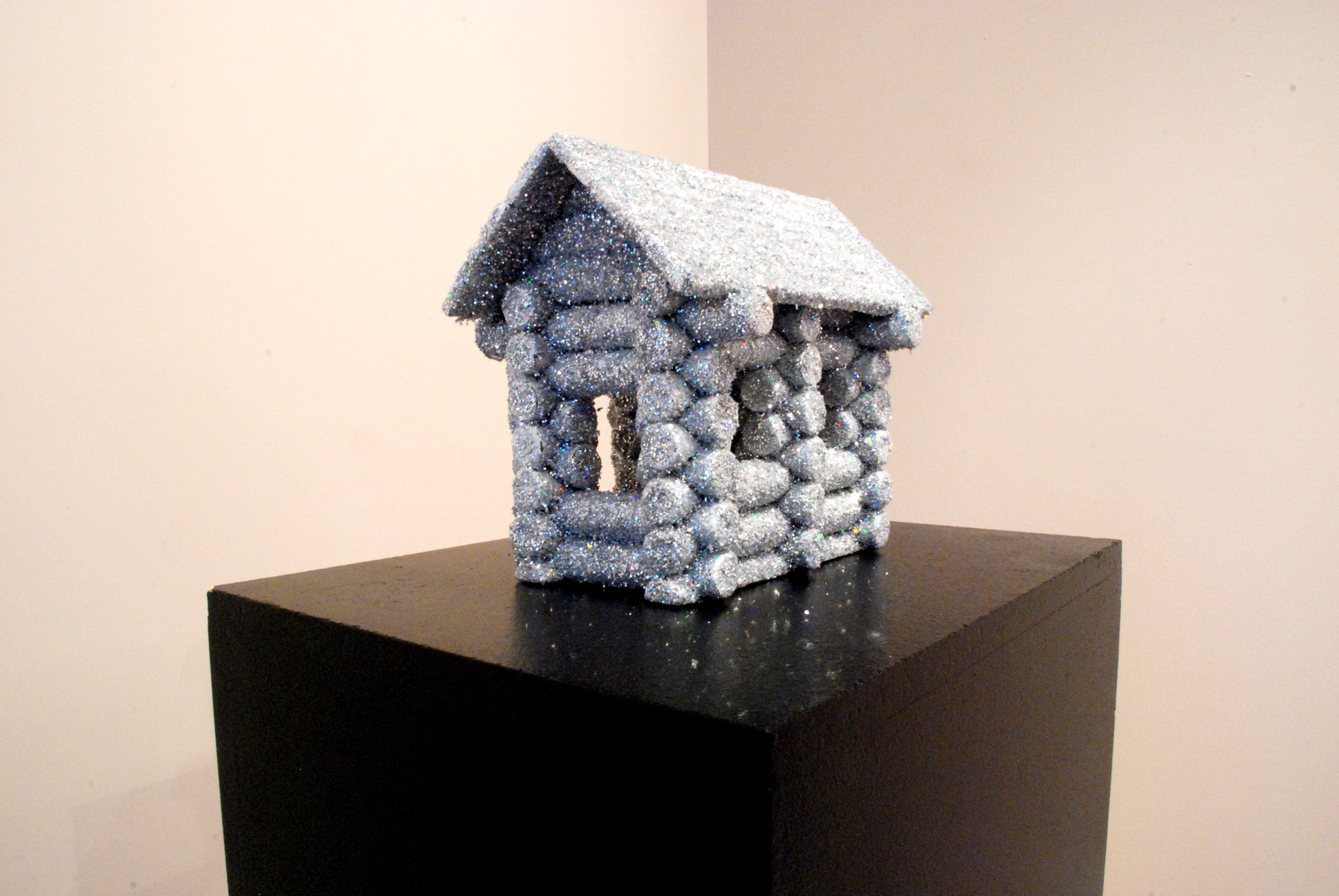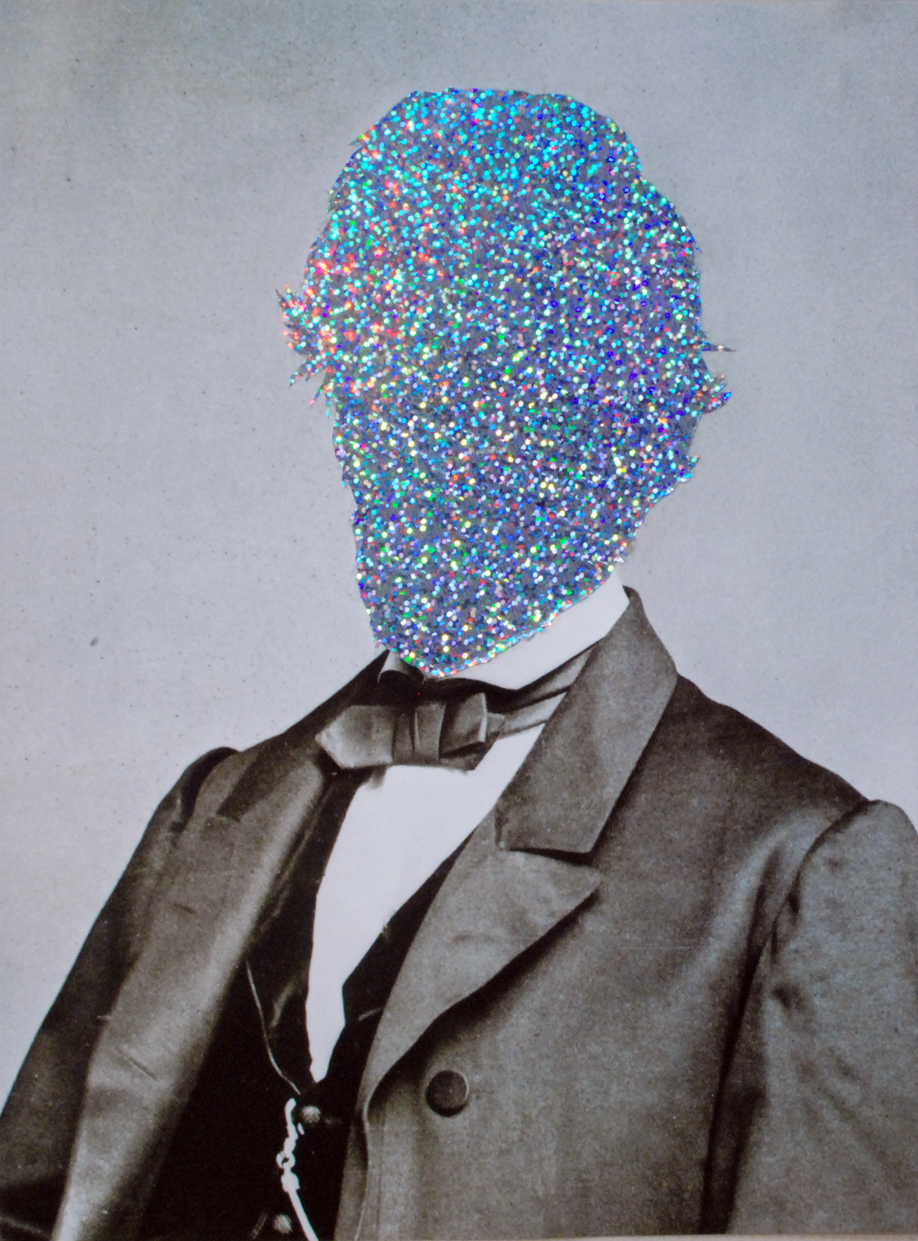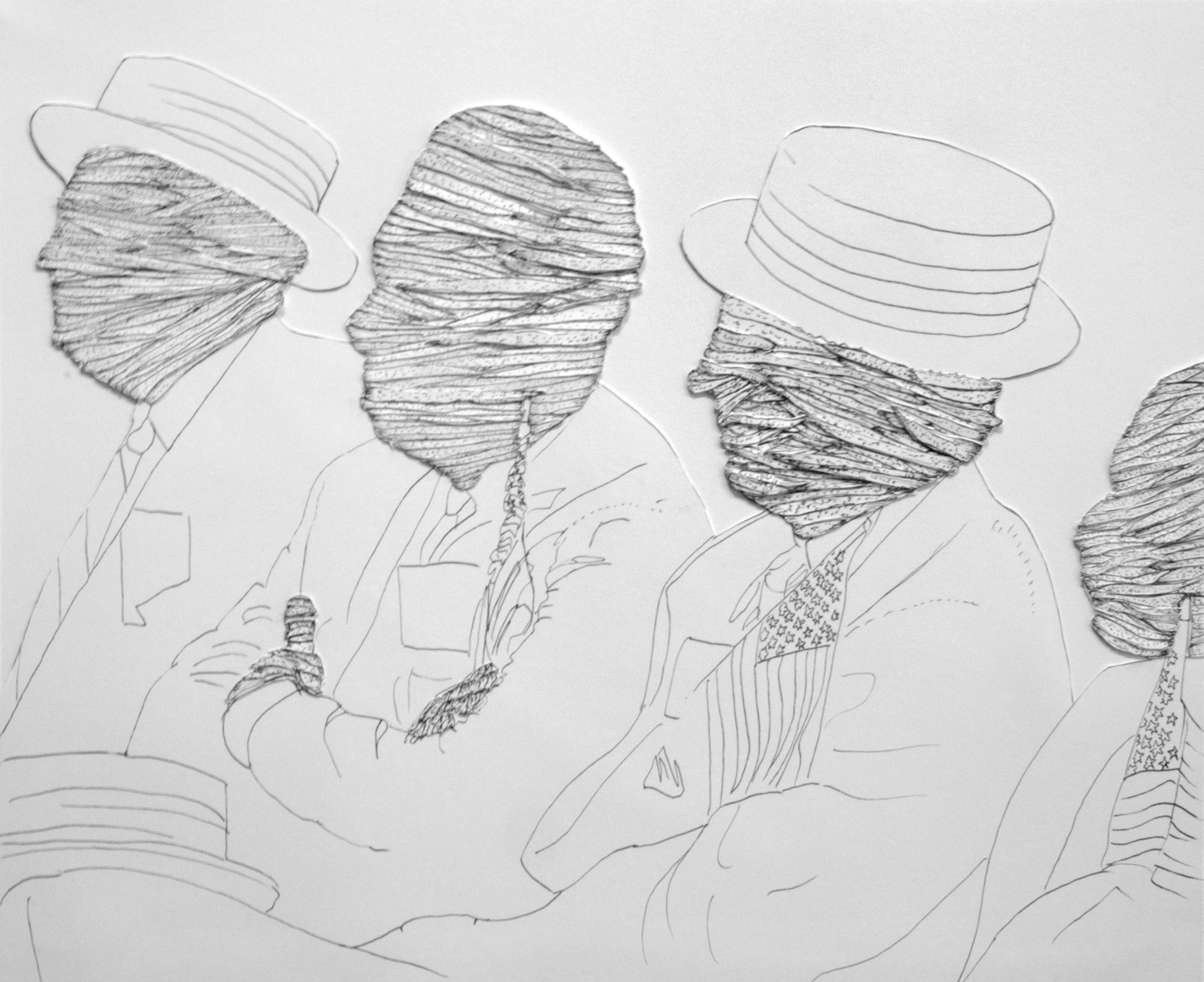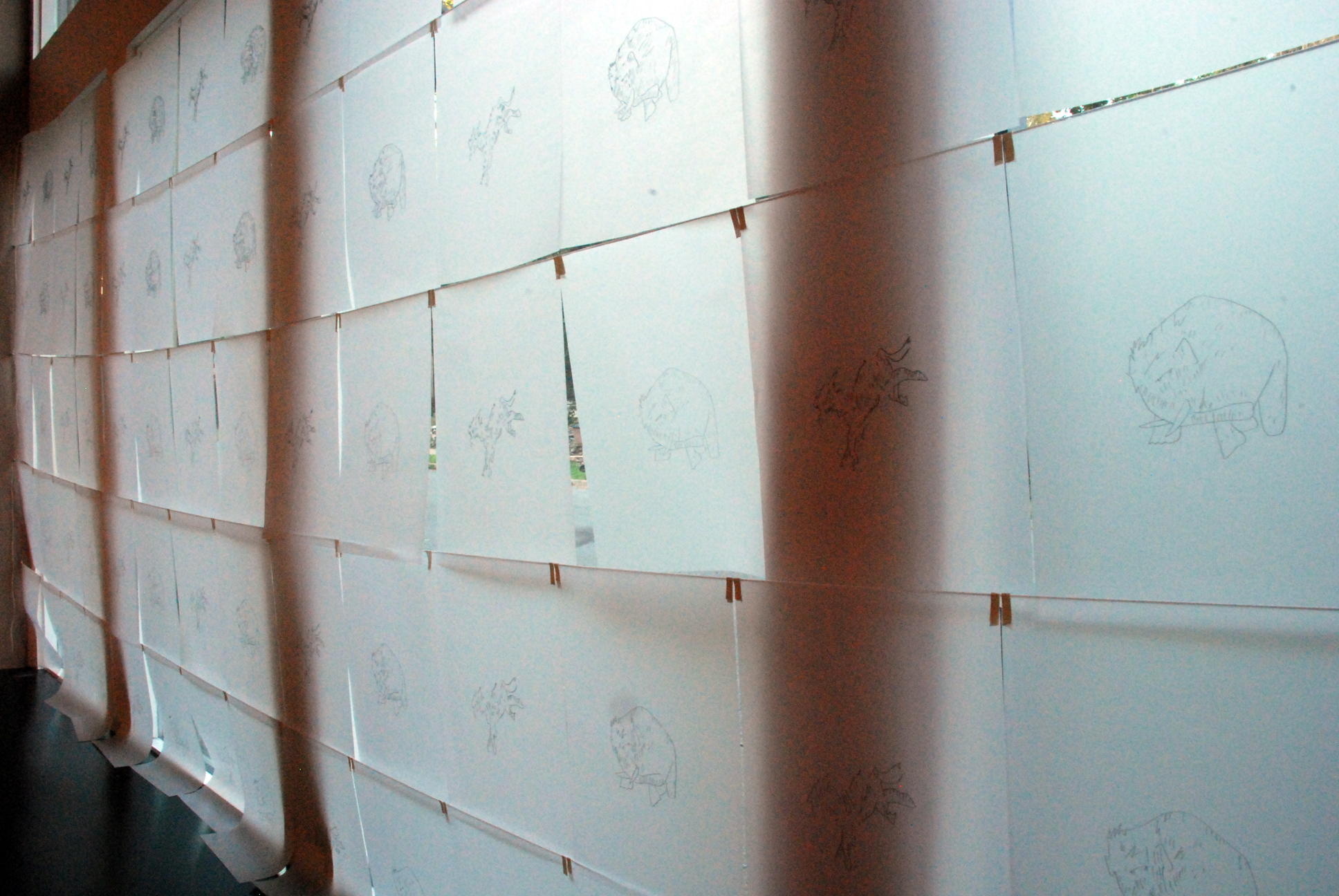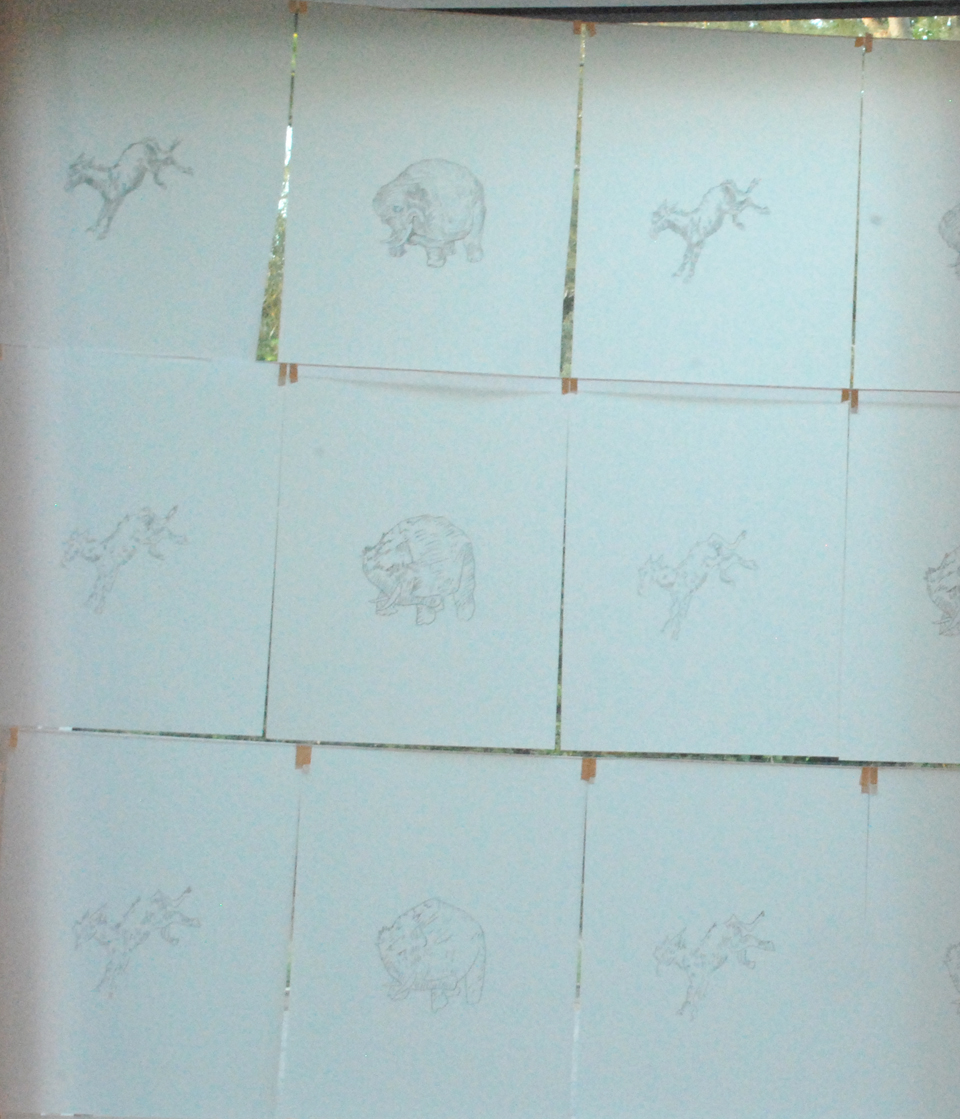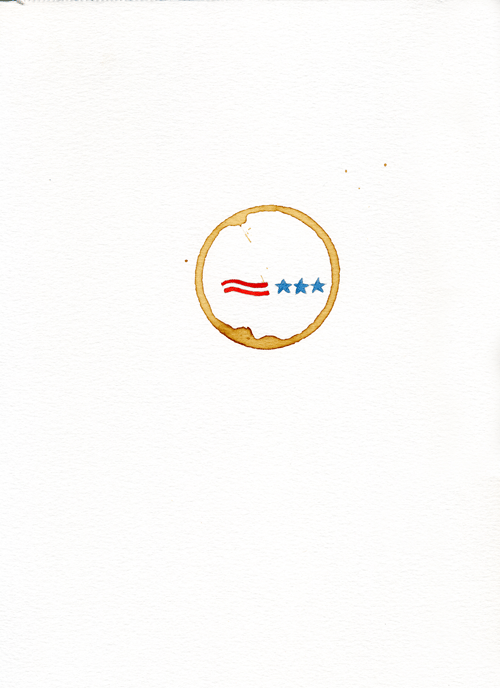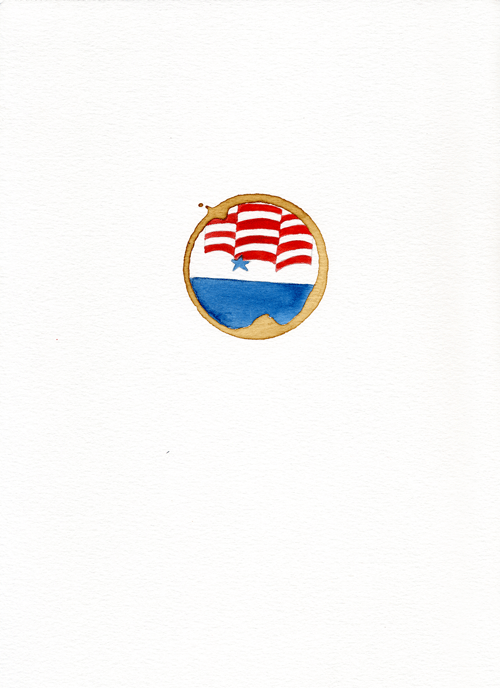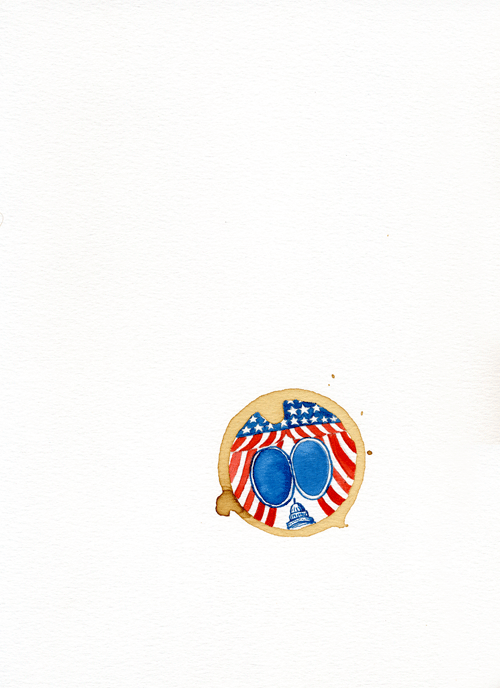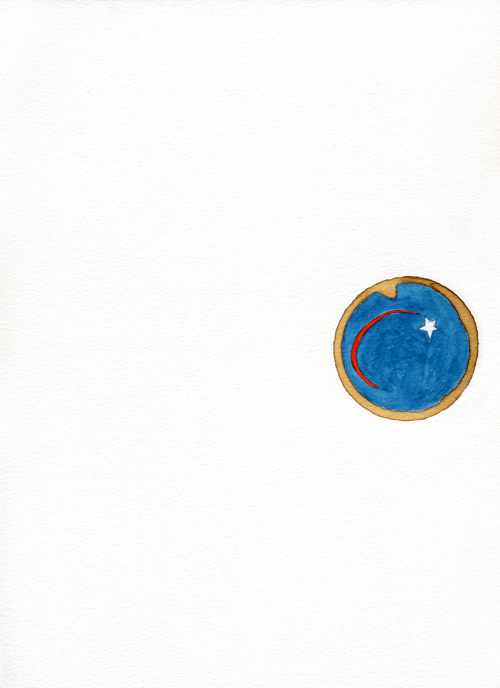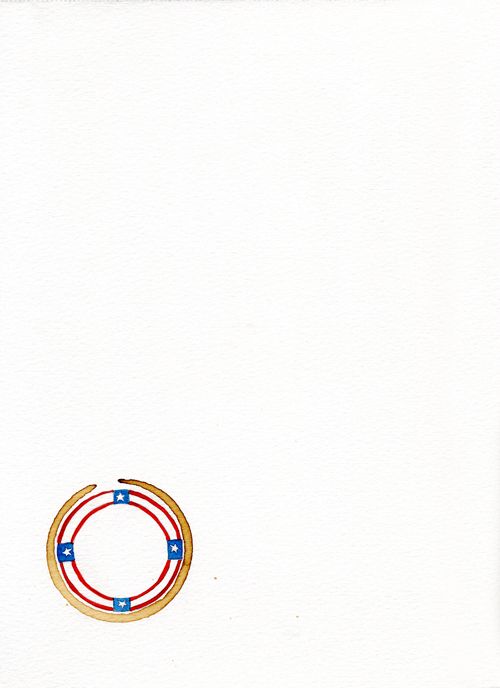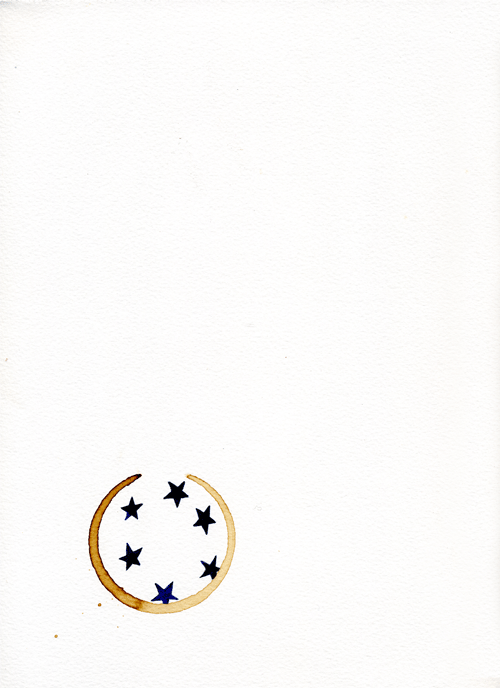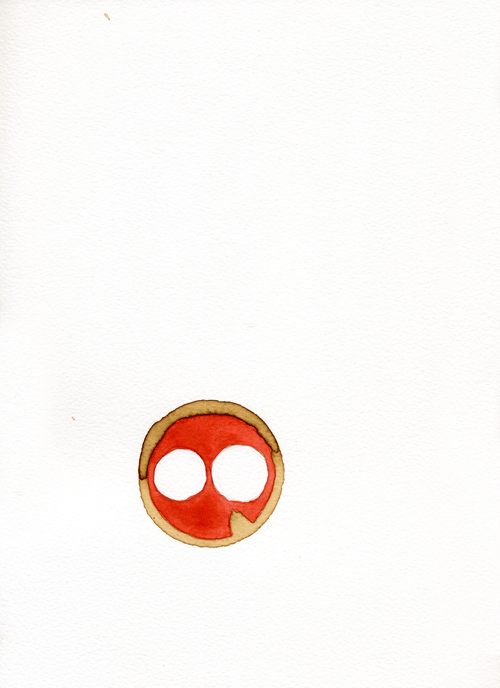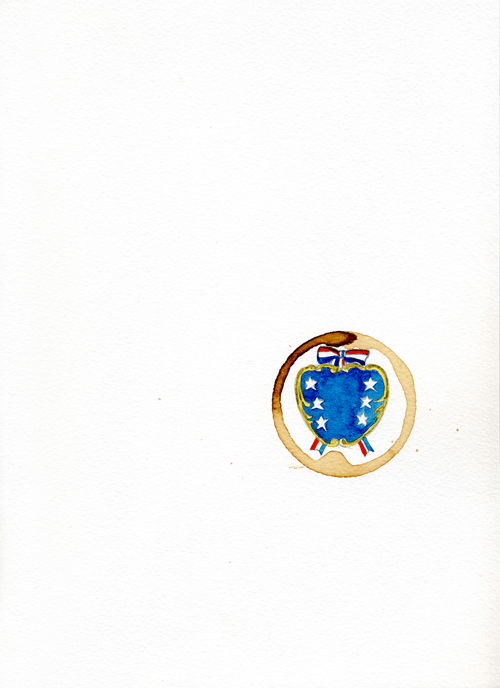Press Release
Snow Gallery presents Tucker Neel: Monuments to the Pres(id)ent, a solo exhibition pairing Neel’s recent work with a curated selection of prints from the gallery by William Hogarth and Giovanni Battista Piranesi.
In a nod to the political season, Snow Gallery is pleased to present Monuments to the Pres(id)ent, an exhibition of new work by Los Angeles-based artist Tucker Neel. The exhibition runs from Friday, October 3, 2008 – November 8, 2008 with an opening reception on Friday, October 3, 2008, from 6:00 to 9:00 p.m.
As an artist concerned with the how memory and memorialization influence subjective and national identity, Neel reflects on the current political landscape with new work questioning notions of presidential leadership, choice, allegiance, ideology, and, specifically, the iconography associated with political debate and electioneering.
This show grew out of the artist's interest in tying together the works of William Hogarth (1697-1764) and Giovanni Battista Piranesi (1720-1778), two artists whose prints he curated from the gallery's extensive collection. Neel created work in dialog with these artists' enduring prints, tying an intentionally tenuous thread between Hogarth's political caricature's and Piranesi's imagined monuments.
Taking these works as a jumping off point, Neel created multiple drawings, prints, and installations, incorporating detailed images of bandaged politicos, reworked campaign buttons, replicated political cartoons, moved national monuments and frustrating flower arrangements. With each of his new works Neel investigates the sometimes-overlooked formal qualities of politicized objects and images that influence national debate and shape our collective identity.
In coordination with this exhibit Neel will be the first artist-in-residence at the James E. Walker Library at Middle Tennessee State University. Working with faculty and students, he will create a limited edition print on The Stones River Press’ replica of an 18th century printing press. Neel will also present a lecture on his work to students and faculty at the University (date and time yet to be determined).
This exhibition is purposefully situated in a very specific political and social context, occurring in the heart of the 2008 Presidential election. With one of the presidential debates just around the corner from the gallery, this exhibition creates a complimentary, open-ended forum, a place to reflect not just on the current political climate, but on how our present-day actions and beliefs are tied up in objects, images, and memories from the past.
For more information about Tucker Neel and to view his projects visit tuckerneel.com
Snow Gallery offers a unique mix of historical and contemporary art juxtaposed to bridge eras and cultures. Rotating current exhibits complement an outstanding collection of rare prints, textiles, and other arts and crafts from around the world.
Snow Gallery presents Tucker Neel: Monuments to the Pres(id)ent, a solo exhibition pairing Neel’s recent work with a curated selection of prints from the gallery by William Hogarth and Giovanni Battista Piranesi.
In a nod to the political season, Snow Gallery is pleased to present Monuments to the Pres(id)ent, an exhibition of new work by Los Angeles-based artist Tucker Neel. The exhibition runs from Friday, October 3, 2008 – November 8, 2008 with an opening reception on Friday, October 3, 2008, from 6:00 to 9:00 p.m.
As an artist concerned with the how memory and memorialization influence subjective and national identity, Neel reflects on the current political landscape with new work questioning notions of presidential leadership, choice, allegiance, ideology, and, specifically, the iconography associated with political debate and electioneering.
This show grew out of the artist's interest in tying together the works of William Hogarth (1697-1764) and Giovanni Battista Piranesi (1720-1778), two artists whose prints he curated from the gallery's extensive collection. Neel created work in dialog with these artists' enduring prints, tying an intentionally tenuous thread between Hogarth's political caricature's and Piranesi's imagined monuments.
Taking these works as a jumping off point, Neel created multiple drawings, prints, and installations, incorporating detailed images of bandaged politicos, reworked campaign buttons, replicated political cartoons, moved national monuments and frustrating flower arrangements. With each of his new works Neel investigates the sometimes-overlooked formal qualities of politicized objects and images that influence national debate and shape our collective identity.
In coordination with this exhibit Neel will be the first artist-in-residence at the James E. Walker Library at Middle Tennessee State University. Working with faculty and students, he will create a limited edition print on The Stones River Press’ replica of an 18th century printing press. Neel will also present a lecture on his work to students and faculty at the University (date and time yet to be determined).
This exhibition is purposefully situated in a very specific political and social context, occurring in the heart of the 2008 Presidential election. With one of the presidential debates just around the corner from the gallery, this exhibition creates a complimentary, open-ended forum, a place to reflect not just on the current political climate, but on how our present-day actions and beliefs are tied up in objects, images, and memories from the past.
For more information about Tucker Neel and to view his projects visit tuckerneel.com
Snow Gallery offers a unique mix of historical and contemporary art juxtaposed to bridge eras and cultures. Rotating current exhibits complement an outstanding collection of rare prints, textiles, and other arts and crafts from around the world.
Introduction to Monuments To the Pres(id)ent
By Molly Rodgveller
Atop a razor-sharp cone shaped peak, Washington DC balances between the political aesthetics of the north and the south. The city demands the esteem of an east coast metropolis, housing more power than a kryptonite cross but is at the same time flanked with mint juleps, mosquitoes, and wrap-around porches. Having one foot in each side, the Yankee north and the still ringing myths of the Confederate south, it is pulled from mom’s house to dad’s house each weekend and has a closet full of clothes at each. Tucker Neel’s work, in Monuments to the Pres(id)ent, is bound to Washington as a magnet that pulls South to North.
Washington DC exists as a microcosm for America, which is scattered here and there with natural and man-made monuments or hybrids thereof (as with Mt. Rushmore). The city is a meta-object lesson, a monument filled, like a toybox, with monuments. Not to convey that they are tossed thoughtlessly, thrown over the shoulder and then peeked at to see if they made it in the basket. A monument cannot be defined as such if its context has not been carefully thought out. But a boy with a box full of toys is quick to assume that box belongs there, just as a kid from DC might feel about his surroundings. Growing up in a city like Washington would force a child and eventually an adolescent to take such care and craft for granted. The Washington Memorial becomes, instead of the structure and space it takes up, a place to meet your dope dealer or smoke cigarettes with your friends at night.
Washington DC is a modern day Rome, the capitol city of a world power packed with tourists too busy proving they’ve seen the sights to slow down and take them in and locals too busy living within monuments to notice that they exist. Just as the desert serves as a place to throw raves and drink beer for the south-westerner or a forest and stream are a place to sneak off and kiss for a north-easterner or the Roman circus is a summer all-night party scene for teens in Rome, DC’s monuments are something to prove you’ve seen or something not seen at all. We all take our surroundings as a given until we leave them behind. Tucker is an LA based artist from DC. His work in Monuments to the Pres(id)ent is clearly as much personal as it is political.
In Tucker’s version, now from a distance, monuments are removed from their settings and tossed surreally into other monuments. We can finally begin to question their context outside of their context and their environment within this new environment. We finally realize how shocking it is that we can even recognize these household images without their frame of reference. Tucker shows us how it is we see something every day without realizing that, we not only do, but that in his case, what we are seeing isn’t just the UPS store that has been in the neighborhood forever without noticing it, it is big and loaded and deliberate and built entirely for the sake of being seen. Twenty foot marble men become casual neighborhood landmarks just as the Pantheon has in Rome.
Many of Tucker’s DC figures are depicted as forgotten, wrapped up, damaged and in bandages, warped and even disfigured. And yet they take on a life of their own, swirling outerspace tentacles that imply so much abandonment that it is almost apocalyptic. The blackness behind the images forces the viewer to imagine a foreboding world in which nothing of culture and humanity remains except for these decaying images of American democracy. Images that we trusted to protect us now remain as bruised proof of their inability to save us from ourselves.
In this politically charged time, it is impossible for art to avoid any sort of political implications. At the same time art that depends on political viewpoints is ghastly. Political art is problematic by nature, because it either lacks a certain humanity or because the art drowns in the propaganda. It can fail to make us reconsider unquestioned truths and instead bombard the viewer with opinionated uppercuts to the jaw. Political art acts, in the same way that a selfish poet acts. The onlooker is given no chance to think for his/herself. In Monuments to the Pres(id)ent, we see art first and politics second. The nature of Tucker’s art requires us to see the images in a political setting. Monuments speak for themselves. The question is, what do they say?
By Molly Rodgveller
Atop a razor-sharp cone shaped peak, Washington DC balances between the political aesthetics of the north and the south. The city demands the esteem of an east coast metropolis, housing more power than a kryptonite cross but is at the same time flanked with mint juleps, mosquitoes, and wrap-around porches. Having one foot in each side, the Yankee north and the still ringing myths of the Confederate south, it is pulled from mom’s house to dad’s house each weekend and has a closet full of clothes at each. Tucker Neel’s work, in Monuments to the Pres(id)ent, is bound to Washington as a magnet that pulls South to North.
Washington DC exists as a microcosm for America, which is scattered here and there with natural and man-made monuments or hybrids thereof (as with Mt. Rushmore). The city is a meta-object lesson, a monument filled, like a toybox, with monuments. Not to convey that they are tossed thoughtlessly, thrown over the shoulder and then peeked at to see if they made it in the basket. A monument cannot be defined as such if its context has not been carefully thought out. But a boy with a box full of toys is quick to assume that box belongs there, just as a kid from DC might feel about his surroundings. Growing up in a city like Washington would force a child and eventually an adolescent to take such care and craft for granted. The Washington Memorial becomes, instead of the structure and space it takes up, a place to meet your dope dealer or smoke cigarettes with your friends at night.
Washington DC is a modern day Rome, the capitol city of a world power packed with tourists too busy proving they’ve seen the sights to slow down and take them in and locals too busy living within monuments to notice that they exist. Just as the desert serves as a place to throw raves and drink beer for the south-westerner or a forest and stream are a place to sneak off and kiss for a north-easterner or the Roman circus is a summer all-night party scene for teens in Rome, DC’s monuments are something to prove you’ve seen or something not seen at all. We all take our surroundings as a given until we leave them behind. Tucker is an LA based artist from DC. His work in Monuments to the Pres(id)ent is clearly as much personal as it is political.
In Tucker’s version, now from a distance, monuments are removed from their settings and tossed surreally into other monuments. We can finally begin to question their context outside of their context and their environment within this new environment. We finally realize how shocking it is that we can even recognize these household images without their frame of reference. Tucker shows us how it is we see something every day without realizing that, we not only do, but that in his case, what we are seeing isn’t just the UPS store that has been in the neighborhood forever without noticing it, it is big and loaded and deliberate and built entirely for the sake of being seen. Twenty foot marble men become casual neighborhood landmarks just as the Pantheon has in Rome.
Many of Tucker’s DC figures are depicted as forgotten, wrapped up, damaged and in bandages, warped and even disfigured. And yet they take on a life of their own, swirling outerspace tentacles that imply so much abandonment that it is almost apocalyptic. The blackness behind the images forces the viewer to imagine a foreboding world in which nothing of culture and humanity remains except for these decaying images of American democracy. Images that we trusted to protect us now remain as bruised proof of their inability to save us from ourselves.
In this politically charged time, it is impossible for art to avoid any sort of political implications. At the same time art that depends on political viewpoints is ghastly. Political art is problematic by nature, because it either lacks a certain humanity or because the art drowns in the propaganda. It can fail to make us reconsider unquestioned truths and instead bombard the viewer with opinionated uppercuts to the jaw. Political art acts, in the same way that a selfish poet acts. The onlooker is given no chance to think for his/herself. In Monuments to the Pres(id)ent, we see art first and politics second. The nature of Tucker’s art requires us to see the images in a political setting. Monuments speak for themselves. The question is, what do they say?
©2024 Tucker Neel. All rights reserved.

